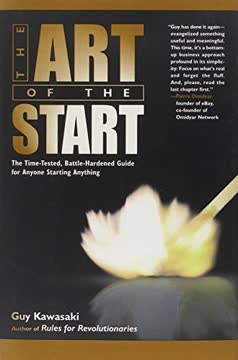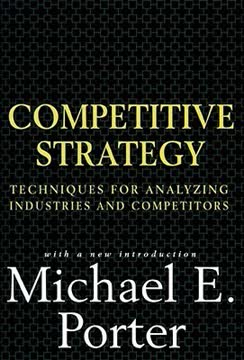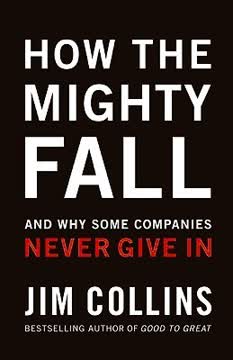重点摘要
1. 系统思维:学习型组织的基石
系统思维是一种看整体的学科。它是一个看相互关系而不是事物的框架,是一个看变化模式而不是静态“快照”的框架。
整体视角。 系统思维提供了从线性因果关系到循环因果关系的关键转变。它使领导者能够超越孤立事件和表面症状,揭示塑造复杂情况的底层结构。这种视角对于解决持久问题和创造持久解决方案至关重要。
实用工具。 该学科提供了反馈回路、系统原型和计算机模拟等实用工具。这些工具帮助管理者可视化并理解其组织、市场和更广泛环境的动态复杂性。通过掌握这些工具,领导者可以识别高杠杆点进行干预,避免其行动的意外后果。
整合力量。 系统思维作为学习型组织其他学科的粘合剂。它提供了一种描述复杂问题的共同语言,帮助团队对挑战和机遇形成共同理解。这种整合能力对于促进协作和推动组织学习与创新至关重要。
2. 个人精通:培养个人成长和愿景
个人精通是不断澄清和深化个人愿景、集中精力、培养耐心和客观看待现实的学科。
自我意识与成长。 个人精通始于对终身学习和自我提升的承诺。它涉及发展清晰的个人愿景,保持愿景与当前现实之间的创造性张力,并培养更清晰地看待当前现实的能力。
组织影响。 组织只有通过学习的个人才能学习。个人精通培养了一支更有承诺、更多主动性和更广泛责任感的员工队伍。这种个人成长直接促进了组织学习和适应能力。
关键实践:
- 澄清个人愿景
- 保持愿景与当前现实之间的创造性张力
- 培养耐心和客观性
- 看到世界的相互联系
- 对整体的同情和承诺
3. 心智模式:挑战假设和促进开放
心智模式是深植于内心的假设、概括,甚至是影响我们理解世界和采取行动的图画或图像。
揭示隐藏假设。 心智模式塑造我们的感知和行动,通常在意识层面以下运作。处理心智模式的学科涉及揭示、测试和改进我们对世界运作方式的内部图像。
促进探究和反思。 该学科的关键技能包括:
- 识别“抽象跳跃”(注意我们从观察到概括的跳跃)
- 揭示“左手栏”(表达我们通常不说的内容)
- 平衡探究和倡导
- 区分宣称的理论和实际使用的理论
组织影响。 通过积极处理心智模式,组织可以克服防御性惯例,改进决策,并促进开放和持续学习的文化。这导致在面对变化的商业环境时更大的适应性和创新性。
4. 共同愿景:对齐个人和组织目标
共同愿景不是一个想法。它是人们心中的一种力量,一种令人印象深刻的力量。
集体愿望。 共同愿景为学习提供了焦点和能量。它超越了合规,培养了真正的承诺,将组织与员工的关系从“他们的”转变为“我们的”。
强大共同愿景的特征:
- 内在而非外在(专注于愿景本身,而不是竞争对手)
- 与整个组织中个人的愿景相连
- 通过持续对话和集体探究不断演变
领导角色。 领导者必须学会倾听他人的愿景,并以激励而非强加的方式分享自己的愿景。建立共同愿景的过程是持续的,并融入日常组织生活的结构中。
5. 团队学习:利用集体智慧
团队学习是对齐和发展团队能力以创造其成员真正渴望的结果的过程。
对话和讨论。 团队学习涉及掌握对话(创造性地探讨复杂问题)和讨论(提出和捍卫不同观点以做出决策)的实践。这些互补的过程使团队能够访问更大的共同意义池。
处理防御性。 团队学习的一个关键方面是识别和处理通常阻碍群体学习的防御性惯例。这需要创造一个安全的环境来揭示和审查假设和信念。
集体智慧。 当团队学习有效时,团队的智慧可以超过个别成员智慧的总和。这导致非凡的结果和加速的个人成长。
6. 第五项修炼的法则:理解系统动力学
今天的问题来自昨天的“解决方案”。
关键系统原则:
- 问题通常源于过去的解决方案
- 你推得越用力,系统反弹得越用力
- 行为在变好之前会变得更糟
- 简单的出路通常会回到原点
- 治疗可能比疾病更糟
- 快速即慢
- 因果关系在时间和空间上不紧密相关
- 小变化可以产生大结果——但最高杠杆点通常最不明显
实际影响。 理解这些法则有助于管理者避免在解决问题和决策中的常见陷阱。它鼓励更长期的视角和寻找根本原因而不是快速解决方案。
系统性解决方案。 通过应用这些原则,组织可以开发更有效、可持续的解决方案来应对复杂问题,避免意外后果并解决根本原因而不是症状。
7. 克服组织中的学习障碍
最有效的防御性惯例,如强势CEO的惯例,是我们看不见的。
常见学习障碍:
- “我就是我的职位”
- “敌人在外面”
- 掌控的错觉
- 对事件的执着
- 煮青蛙的寓言
- 从经验中学习的错觉
- 管理团队的神话
识别模式。 认识到这些学习障碍是克服它们的第一步。组织必须培养识别这些模式的能力,并创建反制它们的结构和实践。
文化转变。 解决这些障碍需要组织文化的根本转变,从责备和防御转向开放、探究和系统思维。
8. 领导者的新工作:设计师、教师和管家
在学习型组织中,领导者是设计师、教师和管家。
设计师角色。 领导者设计组织的目标、愿景和核心价值观。他们还创建将指导思想转化为业务决策的政策、战略和结构。
教师角色。 领导者帮助整个组织的人们发展更系统的视角。他们负责促进每个人的学习,不断帮助人们看到更大的图景。
管家角色。 领导者将其组织视为将学习和变革带入社会的工具。他们服务于超越组织本身的更大目标。
9. 整合学习和工作:建立持续改进的文化
真正的学习触及人类的本质。通过学习,我们重塑自我。
反思实践。 组织必须创建允许定期反思行动的结构和过程。这可以包括行动后回顾(AAR)和团队反思的指定时间。
实时学习。 目标是使学习成为日常工作的一部分,而不是单独的活动。这涉及发展反思中的行动技能,使个人和团队能够实时学习和调整。
文化转变。 整合学习和工作需要组织文化的转变,重视探究和反思与行动和结果同等重要。
10. 创建实践场:通过实验发展技能
就像通过不断练习成为大师艺术家一样,以下原则和实践为不断扩展个人精通的学科奠定了基础。
安全的学习空间。 实践场提供了安全的环境,让团队可以进行实验、犯错和学习,而无需面对现实世界的压力。
实践场类型:
- 模拟和角色扮演练习
- 试点项目
- 原型设计过程
- 组织内指定的“学习实验室”
技能发展。 定期使用实践场使个人和团队能够发展和完善从系统思维到对话和协作解决问题的关键技能。
11. 与业务核心连接:将学习与组织身份对齐
共同愿景对于学习型组织至关重要,因为它为学习提供了焦点和能量。
组织本质。 有效的学习计划与组织的核心身份和目标深度连接。这需要领导者理解并阐明组织真正代表的东西,而不仅仅是盈利。
价值创造。 学习努力应与组织最自然的价值创造方式对齐。这确保了学习计划被视为业务的核心,而不是外围活动。
真实参与。 当学习与组织的本质相连时,它触及人们的内在动机和最深的愿望,培养真正的承诺和变革的能量。
12. 发展学习基础设施:支持持续增长和适应
学习型组织是可能的,因为在内心深处,我们都是学习者。
系统支持。 学习基础设施提供了持续学习和适应所需的持续支持。这些可以包括:
- 正规教育和培训计划
- 知识管理系统
- 实践社区
- 指定的反思时间和空间
- 教练和指导计划
技术支持。 虽然单靠技术不足以实现,但设计良好的IT系统可以显著增强学习能力,促进组织内的知识共享和协作。
不断演变的设计。 学习基础设施必须灵活并随时间演变。领导者应将其发展视为一个迭代过程,不断根据反馈和变化的组织需求进行改进。
最后更新日期:
FAQ
What's The Fifth Discipline about?
- Learning Organizations Concept: The Fifth Discipline by Peter M. Senge introduces the concept of a "learning organization," where members continuously expand their capacity to create desired results.
- Five Core Disciplines: The book outlines five disciplines essential for building a learning organization: Systems Thinking, Personal Mastery, Mental Models, Shared Vision, and Team Learning.
- Systems Thinking Focus: Central to the book is Systems Thinking, which encourages viewing organizations as interconnected systems rather than isolated parts.
Why should I read The Fifth Discipline?
- Transformational Insights: The book provides insights into fostering a culture of continuous learning and adaptability, challenging traditional management practices.
- Practical Framework: It offers a practical framework for understanding complex organizational dynamics and implementing change.
- Timeless Relevance: Despite being published in 1990, its principles remain relevant in today’s fast-paced, interconnected business environment.
What are the key takeaways of The Fifth Discipline?
- Systems Thinking Importance: Understanding organizations as complex systems helps identify leverage points for effective change.
- Integration of Learning and Work: Learning should be integrated into daily work processes, fostering a culture where reflection and action are connected.
- Collective Learning Power: Team learning and shared vision emphasize that “the whole is greater than the sum of its parts.”
What are the best quotes from The Fifth Discipline and what do they mean?
- “The harder you push, the harder the system pushes back.”: Highlights the counterproductive nature of aggressive management tactics, suggesting a need for a nuanced approach.
- “Today’s problems come from yesterday’s ‘solutions.’”: Reflects the idea that quick fixes often lead to new problems, encouraging long-term thinking.
- “The only sustainable competitive advantage is an organization’s ability to learn faster than the competition.”: Emphasizes the critical role of learning in maintaining a competitive edge.
What are the five disciplines outlined in The Fifth Discipline?
- Systems Thinking: Focuses on understanding the whole system and its interrelationships, recognizing patterns and dynamics.
- Personal Mastery: Involves individuals clarifying and deepening their personal vision, emphasizing lifelong learning and self-improvement.
- Mental Models: These are ingrained assumptions that shape understanding; challenging them is crucial for open dialogue and innovation.
- Shared Vision: Creates a common purpose that inspires and aligns the organization, fostering commitment and motivation.
- Team Learning: Emphasizes learning as a team, involving dialogue and collaboration to leverage collective intelligence.
How does The Fifth Discipline define a learning organization?
- Continuous Learning: Encourages individuals to learn continuously and share knowledge, fostering innovation and adaptability.
- Collective Aspiration: Aligns the organization’s vision with individual motivations, fostering a sense of purpose and commitment.
- Systems Perspective: Adopts a systems perspective, recognizing the interconnectedness of various elements within the organization.
What is the significance of personal mastery in The Fifth Discipline?
- Foundation of Learning Organizations: Personal mastery is essential for individual growth, fueling organizational learning.
- Alignment with Organizational Goals: Individuals with high personal mastery align their goals with the organization’s vision, enhancing performance.
- Empowerment and Responsibility: Encourages individuals to take responsibility for their learning, empowering them to contribute meaningfully.
How does The Fifth Discipline address the challenges of change in organizations?
- Understanding Resistance: Emphasizes that resistance often stems from underlying beliefs and fears, crucial for managing change.
- Creating a Shared Vision: Aligns efforts and reduces resistance, fostering a sense of purpose and commitment.
- Building Capacity for Change: The disciplines equip organizations with tools and mindsets to navigate change successfully.
What role do mental models play in The Fifth Discipline?
- Influence on Perception: Mental models are ingrained assumptions that shape perceptions and influence behavior.
- Encouraging Reflection: The book encourages challenging mental models to foster deeper learning and break free from outdated assumptions.
- Facilitating Change: Understanding mental models is essential for facilitating change, making them visible is the first step.
How does The Fifth Discipline address team learning?
- Collective Intelligence: Team learning harnesses collective intelligence to achieve better outcomes, emphasizing collaboration.
- Creating a Learning Environment: Importance of a safe environment for sharing ideas and challenging one another, fostering trust.
- Building Shared Understanding: Involves developing a shared understanding of goals and challenges, enhancing collaboration.
How can organizations foster a culture of learning according to The Fifth Discipline?
- Encourage Personal Mastery: Support individual growth through training, mentorship, and opportunities for reflection.
- Promote Open Dialogue: Foster a culture of open dialogue and inquiry, enhancing collective understanding and innovation.
- Align Vision and Values: Ensure shared vision aligns with core values, fostering commitment and motivation.
What strategies does The Fifth Discipline suggest for building a learning organization?
- Integrating Learning and Work: Make learning a natural part of the organizational culture, applying new knowledge in real-time.
- Creating Practice Fields: Encourage experimentation and learning without fear of failure, fostering innovation.
- Fostering Open Dialogue: Encourage open dialogue and reflection, allowing for the sharing of diverse perspectives and insights.
评论
《第五项修炼》因其对系统思维和组织学习的深刻探索而备受赞誉。读者们欣赏森吉通俗易懂的写作风格和实用的例子。许多人发现书中的概念不仅适用于商业,还对个人成长和社会问题产生影响。尽管有些人批评其篇幅过长和内容重复,但大多数人认为这是理解复杂系统和促进学习型组织的基础性文本。书籍在出版数十年后依然具有持久的相关性,读者们常常推荐它作为领导者和管理者的必读书籍。
Similar Books

















